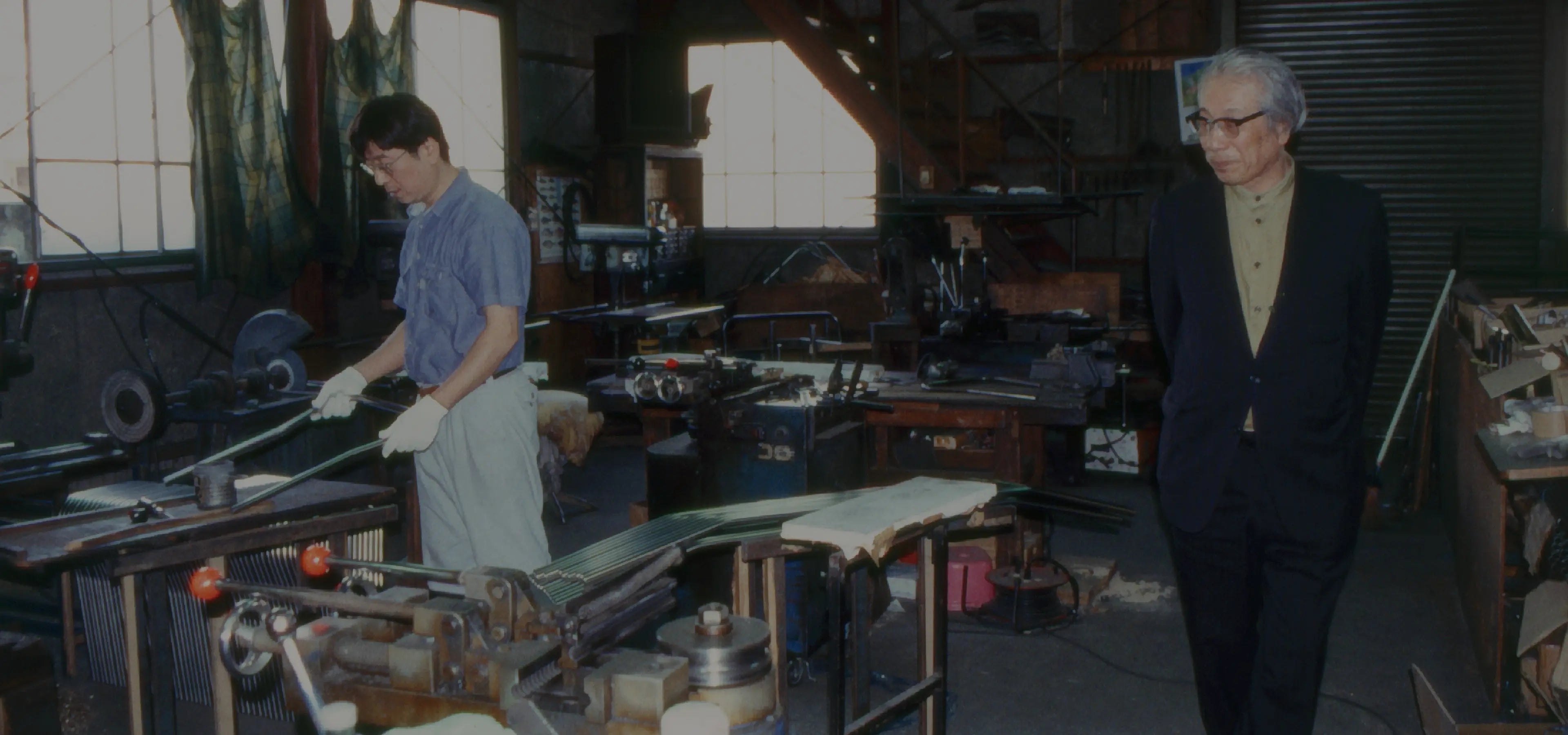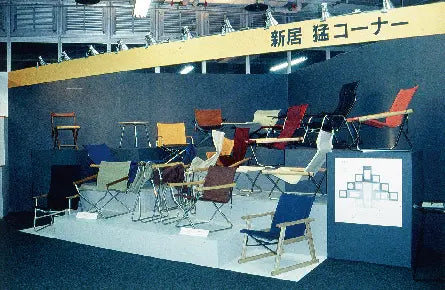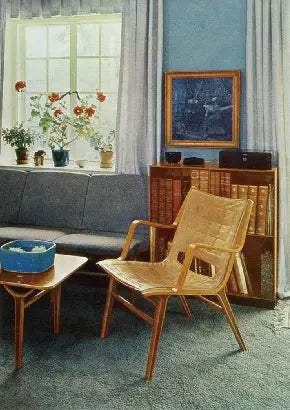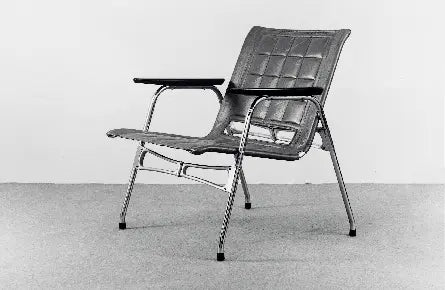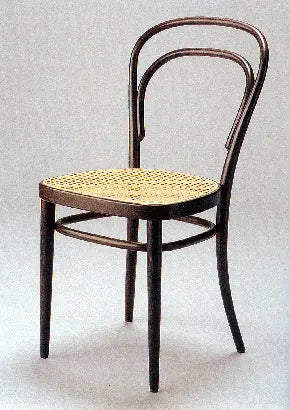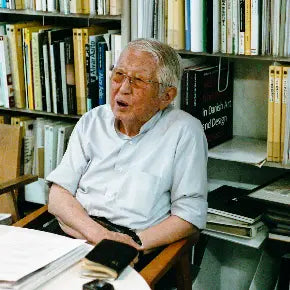Takeshi Nii is a father of a masterpiece foldable chair prized around the world. He dedicated his life to tireless efforts to devise, design, and create the ultimate foldable chair.
In November 1989, I planned and organized an exhibition of folding furniture as a special side event to the International Furniture Fair Tokyo.
Our team collected about 270 foldable chairs available on the market from 15 countries thanks to kind support from local representatives of JETRO*1 with a world-wide network. Some more chairs owned by collectors in Japan were added for the display.
We dedicated a part of the venue for 21 chairs from the Nychair series devised by Takeshi Nii, including his handmade wooden small foldable chair from 1956.
Mr. Nii kept on standing at the right corner of the space dedicated for his chairs for five days throughout the exhibition. To me, he definitely appeared to emanate a certain aura of dedication and determination to perfection of foldable chairs.
Those 21 chairs on display were later donated as his gesture of goodwill to Musashino Art University Museum & Library. They are displayed on and off the campus for study purposes as a Nychair collection along with a collection of modern chairs*2.
*1 JETRO
The Japan External Trade Organization (JETRO) conducts overseas market research, organizes international trade fairs, facilitates imports, and provides other trading support.
*2 Collection of modern chairs
Since opened in 1967, Musashino Art University Museum & Library has been collecting modern chairs as a key part of their collection, which is one of the largest in Japan.
